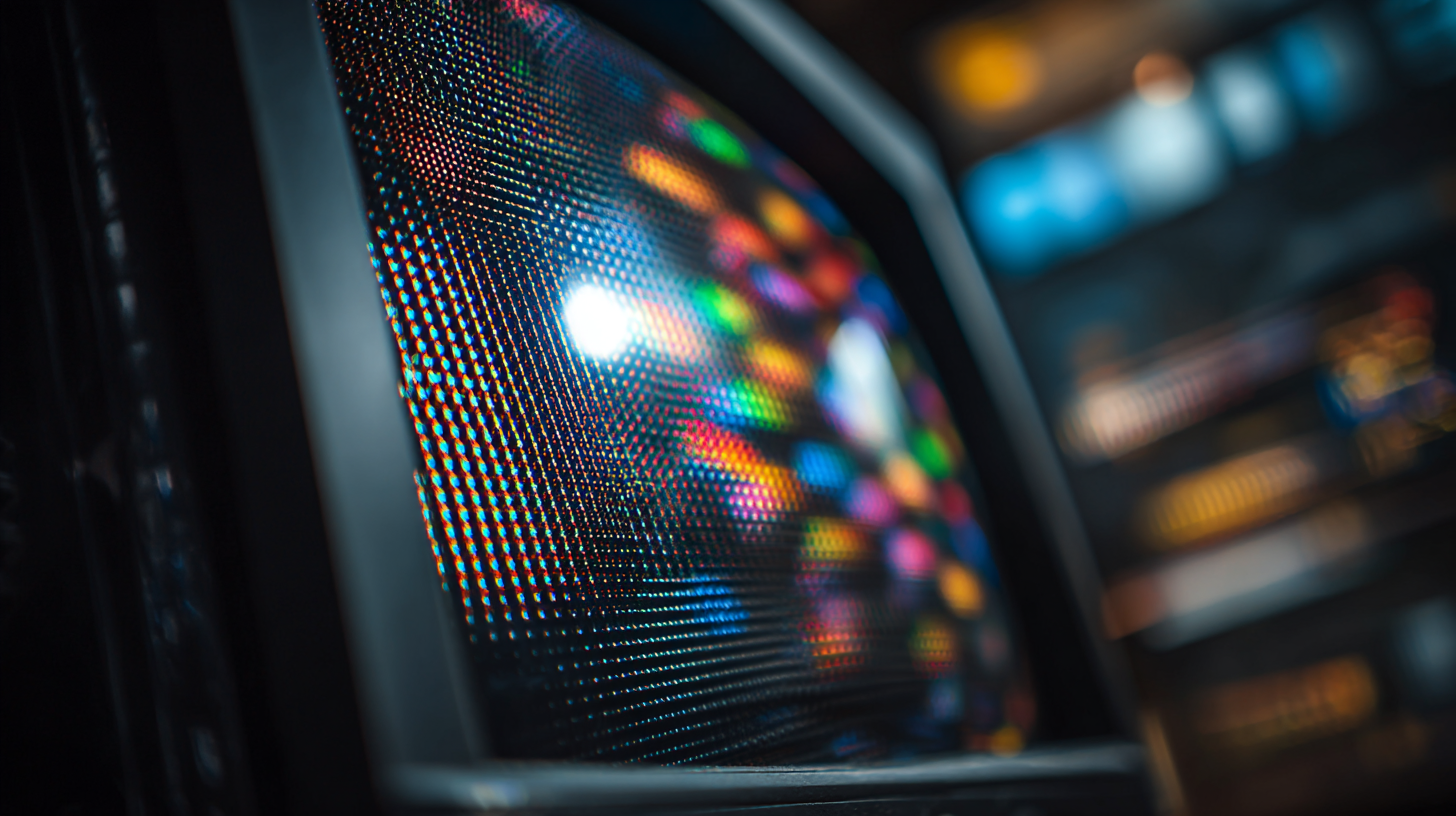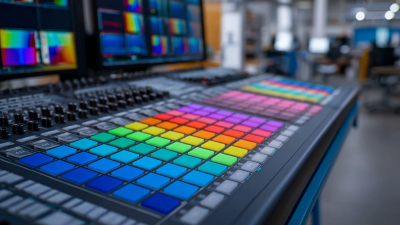Leave Your Message
As modern devices continue to evolve, the integration of advanced display technologies becomes increasingly critical, with the Full Function LCD Display emerging as a key component. According to a recent industry report by MarketsandMarkets, the global LCD display market is projected to reach $130 billion by 2025, driven by the rising demand for high-quality visual experiences in consumer electronics and automotive applications. Full Function LCD Displays not only enhance user interfaces with vibrant colors and sharp imagery but also provide essential functionality such as touch sensitivity and energy efficiency. This complexity is often masked by the seamless user experience they deliver; however, a deeper understanding of the underlying technologies—including liquid crystal composition, backlighting methods, and controller integration—is essential for manufacturers aiming to stay competitive. As we delve into the intricacies of Full Function LCD Displays, we unveil the innovative advancements propelling the displays of tomorrow.

When evaluating full-function LCD displays for modern devices, it’s crucial to consider several key specifications that can impact performance and user experience. First, assess the resolution, as higher pixel counts lead to crisper images and more detail. For general use, a resolution of at least 1920x1080 (Full HD) is advisable, while 4K (3840x2160) is preferable for advanced applications like gaming or graphic design.
Tip: Always check the display’s contrast ratio and brightness. A higher contrast ratio improves the clarity of images, particularly in bright environments, while a brightness level of at least 250 nits ensures visibility in various lighting conditions.
Additionally, examine the response time and refresh rate, especially if the display will be used for fast-paced activities such as gaming or video streaming. A response time of 5ms or lower, along with a refresh rate of at least 60Hz, can significantly enhance your viewing experience.
Tip: Look for displays with low blue light technology to reduce eye strain, making long sessions more comfortable. Choosing the right specifications not only improves functionality but also greatly enhances the overall experience with your modern device.

When selecting the right LCD technology for enhanced visual performance, it is essential to consider the specific requirements of your device and application. Different LCD technologies, such as IPS (In-Plane Switching), TN (Twisted Nematic), and VA (Vertical Alignment), offer various advantages.
 IPS panels, for example, are renowned for their superior color accuracy and widely viewing angles, making them an excellent choice for devices where image quality is paramount, such as smartphones and high-end monitors.
IPS panels, for example, are renowned for their superior color accuracy and widely viewing angles, making them an excellent choice for devices where image quality is paramount, such as smartphones and high-end monitors.
Conversely, TN panels are typically favored for their faster response times and cost-effectiveness, making them suitable for gaming and budget devices. VA panels provide deeper blacks and better contrast ratios, making them ideal for media consumption. Understanding the unique characteristics and limitations of each technology will empower users to make informed decisions based on their visual needs, whether for professional tasks, gaming, or everyday use.
Prioritizing factors such as angle of view, refresh rates, and overall display clarity will ultimately lead to enhanced visual experiences across modern devices.
In recent years, optimizing power consumption in full-function LCD displays has become an imperative for manufacturers, especially in the context of portable devices. According to industry reports, the power requirements of mid-to-high-power electronic devices can pose significant challenges, making energy-efficient solutions critical. Advanced technologies, such as "PFC+QR" and "PFC+PWM," have emerged as effective strategies to enhance energy efficiency in these devices, achieving reduced power consumption without compromising performance.
Furthermore, as virtual reality (VR) technology grows in popularity, the need for longer battery life and minimal energy drain in LCD displays becomes more pressing. The evolution of battery technology over the past decade showcases a significant improvement in sustaining power for intensive applications like VR, where a stable and efficient display is pivotal for an immersive experience. Recent innovations, such as high-refresh-rate display drivers that support HD+ resolutions, underline the industry's commitment to not only bolster visual quality but also to enhance power management. This dual focus on display performance and energy efficiency is essential for meeting the demands of modern consumers who prioritize both functionality and sustainability in their devices.
| Display Technology | Power Consumption (mW) | Resolution (pixels) | Refresh Rate (Hz) | Typical Usage Scenario |
|---|---|---|---|---|
| Twisted Nematic (TN) | 100 | 1920 x 1080 | 60 | Gaming and Watching Movies |
| In-Plane Switching (IPS) | 150 | 1920 x 1080 | 60 | Graphic Design and Multimedia |
| Organic Light Emitting Diode (OLED) | 120 | 2560 x 1440 | 120 | Mobile Devices and High-End Monitors |
| Vertical Alignment (VA) | 130 | 2560 x 1440 | 75 | Watching Movies and Casual Gaming |
| Quantum Dot Display | 110 | 3840 x 2160 | 60 | High-End TVs and Monitors |
| Mini LED | 140 | 3840 x 2160 | 120 | Professional Video Editing |
Troubleshooting common issues in LCD displays is essential for maximizing the efficiency of modern devices, which often rely heavily on screen interfaces. Reports indicate that issues like display flickering, color inaccuracies, and unresponsive touch functionality are prevalent among users. According to recent industry analyses, approximately 40% of consumers experience screen-related problems within the first year of device usage, highlighting the need for effective troubleshooting techniques.
To address these issues, users should begin with basic diagnostics such as checking display cables and settings. For instance, ensuring the correct resolution settings can often resolve color and clarity problems. Additionally, keeping software updated can prevent connectivity issues associated with LCD displays. Emerging research suggests that optimizing user settings not only enhances display quality but can also contribute to better battery life, as poorly configured displays can lead to unnecessary power drain. As modern devices become increasingly sophisticated, understanding these common pitfalls can help users maintain their LCD displays for long-lasting performance and improved user experience.
As the technology behind full function LCD displays continues to evolve, staying informed on emerging trends is crucial for consumers and industry professionals alike. Recent research highlights that the double brightness enhancement film market is expected to grow from $166.56 million in 2024 to $198.43 million by 2032, with a compound annual growth rate (CAGR) of 2.21%. This growth reflects the increasing demand for innovative display technologies that enhance performance and user experience.
The global display market is projected to exceed $136.5 billion in 2023, driven by rising demand for consumer electronics. The CAGR is expected to surpass 5% from 2024 to 2032, emphasizing the importance of keeping abreast of advancements in display technology. Additionally, the LCD alignment film market is forecasted to see revenue growth from $1.2 billion in 2024, reaching $2.5 billion by 2033, indicating a robust trend toward improved display functionalities.
**Tips:** To stay informed on these developments, consider subscribing to industry newsletters and attending conferences that focus on display technologies. Following online forums and social media channels dedicated to tech innovations can also provide timely updates and insights. Engaging with professional networks can further enrich your understanding of market dynamics and emerging trends in LCD technology.






